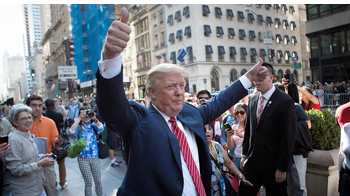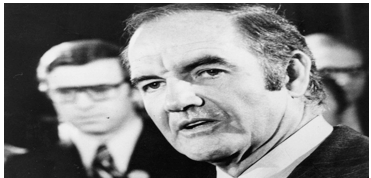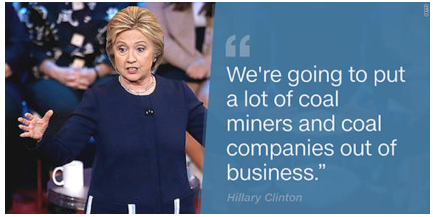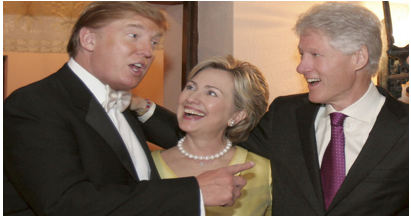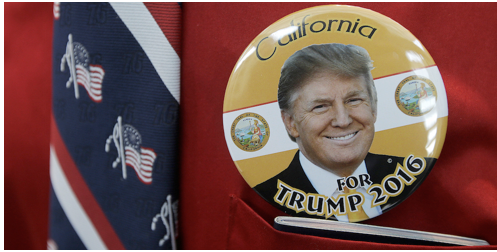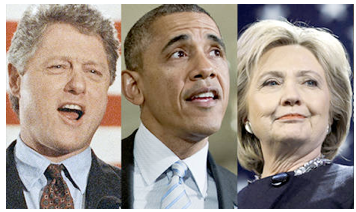The Worship of Donald Trump …Ignoramus-in-Chief … and What It Says about America’s Education System
VOICES-Nobel Prize winning economist Paul Krugman recently wrote about Donald Trump, expressing the view of most educated people from the Right, Left, or Middle of the political spectrum. Krugman puts the matter directly: "Donald Trump is an ignoramus.”
University educator Arthur Camins’ article in Huffpost says that perhaps the Trump candidacy has come about due to the fact that schools fail at teaching Citizenship Development. As an educator of public policy and an educational researcher for many decades, I agree. A great failure of public education is the sparse teaching and learning about citizenship and what it means to live in a nation of laws.
The operant question seems to be, why are so many Americans willing to support Trump, a man who seems to be a distorted and uninformed clown, a showman and greed merchant who is proud of his ignorance and is so egocentric that he does not even want to learn?
This group of voters presents a frightening prospect for our society. For example, on Thursday, Mother Jones magazine’s David Corn reported that Anthony Senecal, who served as Trump’s butler for 17 years before becoming the real estate mogul’s in-house “historian” at Mar-a-Lago, in Palm Beach, Florida, has been taking to Facebook to rant about how the current president should be hanged. “Looks like that sleezey bastard zero (O) is trying to out maneuver Congress again, if the truth be known this prick needs to be hung for treason!!!” Senecal declared on his Facebook page on April 21, 2015.
The work of William Shirer from the early 1960s, “The Rise and Fall of the Third Reich,” rings alarms that resonate today as we see fellow citizens rushing into the arms of this potential despot – one who could possibly create a nuclear holocaust with his hand on the red phone. This theme is the core message of Ionesco's remarkable play, “Rhinoceros,” depicting those who rushed to join the Anschluss in Germany and throughout Europe before WW II. Many people today feel safe to express their hate for others of different nationalities, different religions, different skin colors; and Trump offers them permission to divide Americans and incite violence.
Are all these American voters virulent bigots who are against immigrants, Jews, Muslims, the educated, teachers, and almost everyone else in the main stream in the US? Will they be rushing to turn in their neighbors who may then be hauled away to 21st century gas chambers? Will they be standing by to steal all their land and worldly goods, as happened under the Nazis?
Are these voters striving to somehow be seen as billionaire wannabes? Or are they poor, uneducated and easily taken in by a snake oil salesman who wants to "Make America Great Again?”
Do these “know-nothings” follow the lead of “The Turner Diaries,” wanting only to have a White Christian country where people are able to string up from the light poles all people of color and people of other religions, as depicted in this hate-filled book?
This is the moment to figure out who the “Trump voters” are and why they exist…and then, what we can do as a community to fix the problem.
Is John Dewey somehow responsible for this frightening turn of events? Is it what has been taught (or not taught) in our public schools over the past 60 years that has created a society that is no longer a marketplace of ideas? Have we devolved into a “march of the marionettes,” willing to follow Trump toward national, and possibly planetary, destruction?
Or is it more reasonable to look at post-World War II American economics and culture to find an answer?
The stream of recent history, from the era of Bundles for Britain and Rosie the Riveter to today, is marked with the upsurge of contemporary robber barons who idolize and idealize Wall Street and the Free Market. The confluence of universal education and the union movement after WWII built the strongest middle class that history has ever known. But then came the 180 degree turnabout with the rise of the Reagan Revolution. Eventually, this led to 2008: worldwide bank scams and the bundling of credit default swaps and collateral debt obligations, all of which destroyed the economy and broke the middle class.
The downfall of the middle class can be traced from the banks that are “too big to fail” (the ones that are now able to take endless risks on the public dole, like using public cash in the form of FDIC guarantees to banksters who reap the rewards) to the redistribution of wealth to the 1%, to the rise of the entertainment industry that includes Faux (Fox) News, a pop music industry that urges you to “do your own thing” (i.e. cop killing or rape) and the endless murder that is shown in films, cartoons, and television.
How mind bending and inculcating is it to have tiny children watching iPads and TV screens, seeing and hearing the devolution of an orderly respectful society of laws? In its place, we have “heroes” that are tattooed and pierced gangster-types who beat and kill others for unleashed super powers?
And now in the 21st Century, the billionaire class led by Eli Broad, the Waltons, Rupert Murdoch, Pete Peterson, Michael Milken, Michael Bloomberg, Bill Gates, and their ilk, is fighting to do away with public education. They want to privatize all public schools for profit, undermining universal free education and critical thinking. They want to create unquestioning cogs to fit their corporate needs, while attempting to kill off the entire union movement. Keep 'em poor and dumb and manageable. That seems to be the goal.
Oligarchic profiteering, paired with keeping the populace ignorant through a managed media, is leading America into arms of Donald Trump and David Duke -- and straight to fascism. The rush to make big bucks by devaluing our society of laws and universal free education, the glorifying of infotainment news (owned mainly by Murdoch) that skims facts with a quick rush to judgement about how the world works, has led too many to demand, buy, keep, and use their guns, including automatic mass killing weapons. These people want easy answers to complex situations, want only what pleases them, and exhibit a selfishness that shows up as freeway rage, gang wars, racist clashes, mass murder, and finally … voting for a Know Nothing like Donald Trump.
Is America finished as a democratic republic? Are we now to become a nation of roaming mobs intent on killing, beating and stealing from others who do not agree with us?
I see little connection to public school education, but rather a strong correlation to the overarching greed of the billionaire class which insulates itself from harm as it instigates internecine warfare in America.
(Ellen Lubic, Director of Joining Forces for Education is a Public Policy educator/writer. Views expressed are those of the author and do not reflect the views of CityWatch or its ownership.) Edited for CityWatch by Linda Abrams.
-cw

